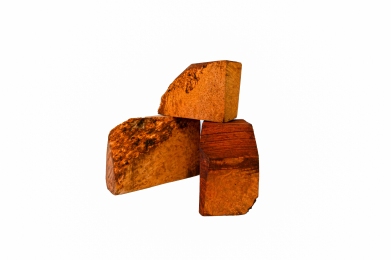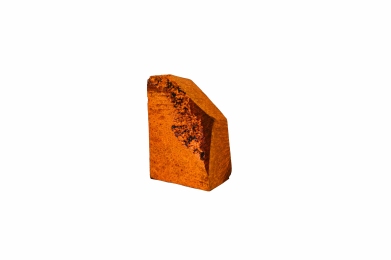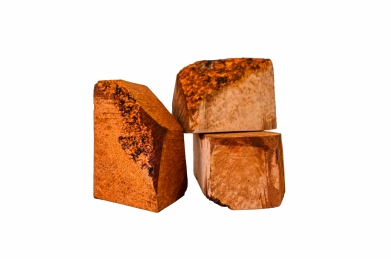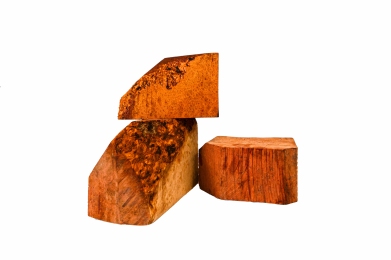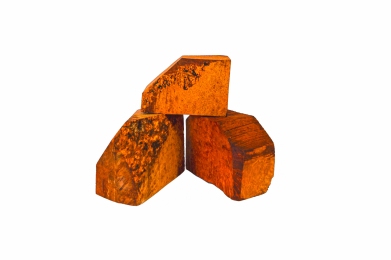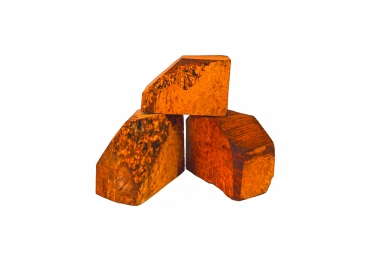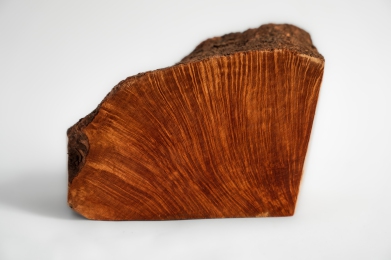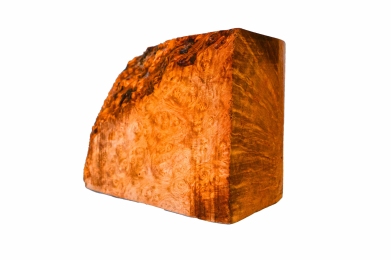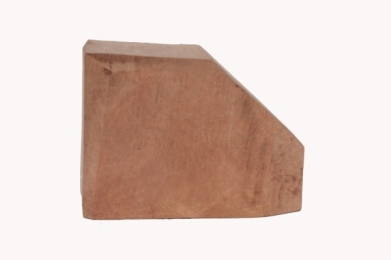
This briar is characterized by a spherical structure with numerous tubes branching from the center, the base of the stem. These tubes, visible as small circles or "Birdseyes" when the wood is cut across, are vessels that transport nutrients from the roots to the stem. When cut longitudinally, these tubes appear as "flames," creating a distinctive visual effect. Processing this type of briar presents several challenges: natural imperfections can lead to significant waste, often up to 70%. Out of 100 kg of burl, on average only 30 kg of semi-finished pieces are suitable for boiling.
This high waste percentage is due to the burl's growth, expanding like an inflated balloon, causing inevitable defects. After extraction, cutting, and boiling, the briar dries out and its circulatory system atrophies, increasing transpiration on surfaces cut perpendicular to the tubes. This specific cut gives pipes a unique appearance, with a surface dotted with numerous darker spots, each representing the end of a tube.
The peculiarity of this cut divides the surface of a pipe's bowl into quarters: two dotted quarters and two horizontally striped quarters. The quality and value of the pipe increase with the precision of the cut, making Birdseye pipes particularly sought after by enthusiasts. Each pipe crafted with this briar is a masterpiece of craftsmanship, reflecting the beauty and complexity of nature.
